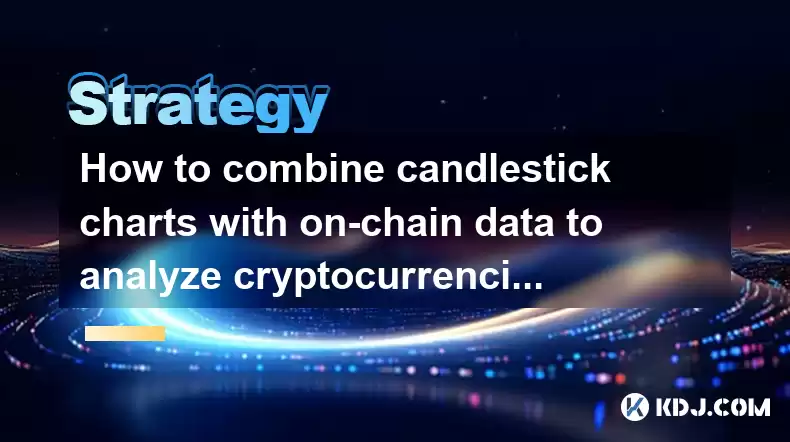-
 Bitcoin
Bitcoin $115100
1.27% -
 Ethereum
Ethereum $3675
2.71% -
 XRP
XRP $2.995
1.45% -
 Tether USDt
Tether USDt $1.000
0.02% -
 BNB
BNB $769.8
2.64% -
 Solana
Solana $168.0
3.25% -
 USDC
USDC $0.9999
-0.01% -
 TRON
TRON $0.3371
1.48% -
 Dogecoin
Dogecoin $0.2051
3.36% -
 Cardano
Cardano $0.7394
2.30% -
 Hyperliquid
Hyperliquid $38.15
0.42% -
 Stellar
Stellar $0.3966
-0.36% -
 Sui
Sui $3.486
2.93% -
 Chainlink
Chainlink $16.72
2.52% -
 Bitcoin Cash
Bitcoin Cash $568.0
4.36% -
 Hedera
Hedera $0.2440
2.59% -
 Ethena USDe
Ethena USDe $1.001
0.04% -
 Avalanche
Avalanche $22.16
2.06% -
 Litecoin
Litecoin $119.1
-0.73% -
 UNUS SED LEO
UNUS SED LEO $8.991
0.04% -
 Toncoin
Toncoin $3.232
-0.39% -
 Shiba Inu
Shiba Inu $0.00001233
2.82% -
 Uniswap
Uniswap $9.717
2.53% -
 Polkadot
Polkadot $3.664
1.85% -
 Dai
Dai $1.000
0.01% -
 Monero
Monero $281.2
-3.89% -
 Bitget Token
Bitget Token $4.350
1.55% -
 Cronos
Cronos $0.1428
5.07% -
 Pepe
Pepe $0.00001050
3.68% -
 Aave
Aave $262.3
3.54%
How to combine candlestick charts with on-chain data to analyze cryptocurrencies?
Combining candlestick charts with on-chain data like transaction volume and active addresses provides a comprehensive view of market trends and potential price movements.
Apr 01, 2025 at 12:28 am

Understanding the Synergy of Candlestick Charts and On-Chain Data
Candlestick charts provide a visual representation of price action over time, showing open, high, low, and closing prices. They are a powerful tool for technical analysis, identifying patterns and potential price movements. However, they only tell half the story. On-chain data, derived directly from blockchain transactions, offers a deeper understanding of market sentiment and network activity. Combining these two analytical approaches provides a more comprehensive and nuanced perspective.
Deciphering On-Chain Metrics Relevant to Price Action
Several on-chain metrics are particularly useful when combined with candlestick charts. These metrics provide context to the price movements shown on the charts. For example, transaction volume can indicate buying or selling pressure. High volume during an upward trend strengthens the bullish signal, while high volume during a downward trend might suggest a strong bearish force. Similarly, active addresses reveal network participation. A surge in active addresses often precedes a price increase, suggesting growing interest and adoption.
Another crucial metric is exchange inflows and outflows. High inflows to exchanges might suggest upcoming selling pressure, while high outflows often signal accumulation by long-term holders. Analyzing these metrics alongside candlestick patterns can reveal significant insights. For instance, a bearish candlestick pattern coupled with high exchange inflows might strengthen the bearish prediction. Conversely, a bullish pattern combined with low exchange inflows could indicate strong accumulation.
Realized Cap is a key indicator of the overall market valuation based on the cost basis of coins last moved. Comparing it with the market cap can reveal market sentiment. A significant divergence could suggest overbought or oversold conditions. Miner behavior also offers valuable insights. Analyzing miner selling pressure or accumulation can provide early warnings of potential price shifts. Understanding these metrics is crucial for effective analysis.
Practical Steps to Combine Candlestick Charts and On-Chain Data
To effectively combine both data types, follow these steps:
- Choose a reputable charting platform: Select a platform that integrates both candlestick charts and on-chain data. Many platforms now offer this functionality.
- Identify relevant on-chain metrics: Select the metrics most relevant to the cryptocurrency you're analyzing. The importance of specific metrics varies across different cryptocurrencies.
- Overlay on-chain data on candlestick charts: Most platforms allow you to overlay on-chain data directly onto your candlestick charts. This visual representation helps to correlate price movements with on-chain activity.
- Analyze correlations: Look for correlations between price movements and on-chain metrics. For example, does a surge in active addresses precede a price increase?
- Consider multiple timeframes: Analyze both short-term and long-term charts to identify trends and potential reversals. The combination of short-term price action and long-term on-chain trends can offer particularly valuable insights.
- Use multiple indicators: Don't rely on a single indicator. Combine multiple on-chain metrics and technical indicators from the candlestick chart for a more robust analysis.
Advanced Techniques for Enhanced Analysis
For more advanced analysis, consider using these techniques:
- Develop custom indicators: Some platforms allow you to create custom indicators combining on-chain and price data. This allows for a tailored analysis specific to your needs and trading style.
- Backtesting strategies: Test your combined analysis strategies on historical data to evaluate their effectiveness. This helps to refine your approach and increase confidence in your predictions.
- Sentiment analysis: Combine on-chain data with sentiment analysis from social media and news sources for a holistic view of market sentiment.
Understanding the Limitations
While combining candlestick charts and on-chain data provides a powerful analytical framework, it's crucial to acknowledge its limitations. On-chain data can lag behind price movements, and not all on-chain metrics are equally reliable indicators of future price action. Correlation doesn't equal causation; observing a correlation doesn't guarantee a causal relationship. Therefore, always use multiple sources of information and exercise caution.
Frequently Asked Questions
Q: What are the best platforms for combining candlestick charts and on-chain data?
A: Several platforms offer this functionality, including TradingView, Glassnode Studio, and CoinMetrics. The best platform for you will depend on your specific needs and preferences.
Q: Which on-chain metrics are most important for cryptocurrency analysis?
A: The most important metrics vary depending on the cryptocurrency and the specific analytical goal. However, key metrics include transaction volume, active addresses, exchange inflows and outflows, realized cap, and miner behavior.
Q: How can I avoid misinterpreting on-chain data?
A: Avoid relying solely on a single metric. Combine multiple on-chain metrics with other forms of analysis, including technical analysis from candlestick charts and fundamental analysis. Always consider the context and limitations of the data.
Q: Is this type of analysis suitable for all cryptocurrencies?
A: While generally applicable, the usefulness of combining candlestick charts and on-chain data varies across different cryptocurrencies. The level of detail and the availability of on-chain data differ significantly.
Q: Can I use this analysis for short-term trading?
A: Yes, this combined analysis can be used for short-term trading, but it's crucial to understand that on-chain data often lags behind price movements. Therefore, short-term trading based on this analysis requires careful consideration and risk management.
Q: What are some common pitfalls to avoid when using this approach?
A: Common pitfalls include over-reliance on single metrics, ignoring context, misinterpreting correlations as causation, and neglecting fundamental analysis. Always use a holistic approach.
Disclaimer:info@kdj.com
The information provided is not trading advice. kdj.com does not assume any responsibility for any investments made based on the information provided in this article. Cryptocurrencies are highly volatile and it is highly recommended that you invest with caution after thorough research!
If you believe that the content used on this website infringes your copyright, please contact us immediately (info@kdj.com) and we will delete it promptly.
- HashFlare Founders Face the Music: Jail Time Looms?
- 2025-08-07 14:30:12
- Toshi on Binance.US: A Memecoin's Big Break
- 2025-08-07 14:30:12
- Bitcoin, SPAC Mergers, and Parataxis: A New Yorker's Take on Crypto's Wall Street Moment
- 2025-08-07 14:50:27
- Bitcoin, Collateral, and Loan Strategies: A New York Minute on the Future of Finance
- 2025-08-07 14:50:27
- Ethereum's Bullish Surge: Reclaiming Crypto Leadership, a New York Minute
- 2025-08-07 14:55:12
- BlockDAG, Litecoin, and Cardano: Charting the Course in Crypto's Dynamic Waters
- 2025-08-07 09:09:06
Related knowledge

How to avoid common crypto investment mistakes?
Jul 13,2025 at 01:35am
Understanding the Risks of Crypto InvestmentInvesting in cryptocurrency can be highly rewarding, but it also comes with significant risks. One of the ...

What is a long-short crypto strategy?
Jul 15,2025 at 10:56am
Understanding the Basics of a Long-Short Crypto StrategyA long-short crypto strategy is an investment approach where traders simultaneously take long ...

What is a long-short crypto strategy?
Jul 11,2025 at 01:28pm
Understanding the Basics of Long-Short Crypto StrategyA long-short crypto strategy is an investment approach where traders take both long and short po...

How to use the RSI indicator for crypto?
Jul 12,2025 at 03:56pm
Understanding the RSI Indicator in Cryptocurrency TradingThe Relative Strength Index (RSI) is a momentum oscillator used to measure the speed and chan...

Is copy trading a good strategy for crypto beginners?
Jul 12,2025 at 08:28am
Understanding Copy Trading in the Cryptocurrency MarketCopy trading is a strategy where novice traders replicate the trades of experienced investors a...

How to build a crypto portfolio with $1000?
Jul 13,2025 at 08:14pm
Understanding the Basics of Cryptocurrency InvestmentBuilding a crypto portfolio with $1000 starts with understanding the fundamentals of cryptocurren...

How to avoid common crypto investment mistakes?
Jul 13,2025 at 01:35am
Understanding the Risks of Crypto InvestmentInvesting in cryptocurrency can be highly rewarding, but it also comes with significant risks. One of the ...

What is a long-short crypto strategy?
Jul 15,2025 at 10:56am
Understanding the Basics of a Long-Short Crypto StrategyA long-short crypto strategy is an investment approach where traders simultaneously take long ...

What is a long-short crypto strategy?
Jul 11,2025 at 01:28pm
Understanding the Basics of Long-Short Crypto StrategyA long-short crypto strategy is an investment approach where traders take both long and short po...

How to use the RSI indicator for crypto?
Jul 12,2025 at 03:56pm
Understanding the RSI Indicator in Cryptocurrency TradingThe Relative Strength Index (RSI) is a momentum oscillator used to measure the speed and chan...

Is copy trading a good strategy for crypto beginners?
Jul 12,2025 at 08:28am
Understanding Copy Trading in the Cryptocurrency MarketCopy trading is a strategy where novice traders replicate the trades of experienced investors a...

How to build a crypto portfolio with $1000?
Jul 13,2025 at 08:14pm
Understanding the Basics of Cryptocurrency InvestmentBuilding a crypto portfolio with $1000 starts with understanding the fundamentals of cryptocurren...
See all articles

























































































